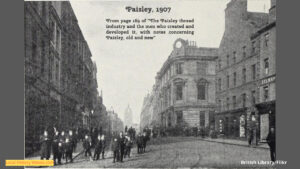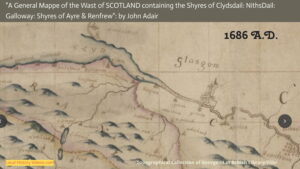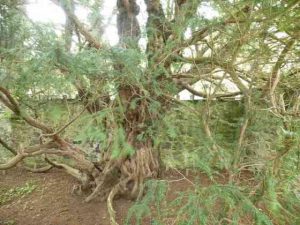Glimpse history through old images of Renfrew, the county town in the west central lowlands of Renfrewshire, Scotland.
Renfrew Tolbooth
The original Renfrew Toolbooth was built in 1670.
Repairs had to be carried out in 1688, at the expense of the Convention of Royal Burghs, as the building had fallen into ruinous decay. With an added new wing, the renovated building served as a Town Hall, as well as being a jail, keeper’s home, and court.
According to 1887 publication “The castellated and domestic architecture of Scotland, from the twelfth to the eighteenth century”, by David MacGibbon and Thomas Ross, the Tollbooth followed the convention for an outside staircase leading up to a first floor doorway.
There was a tower, possibly a bell tower, as well as a council chamber.
Court proceedings were carried out there until 1748, though the jail remained open until 1839.
The new Town Hall was built in 1871, replacing the ancient Tollbooth.
The key to the original Renfrew Tolbooth is now held in the Glasgow Art Galleries and Museum.
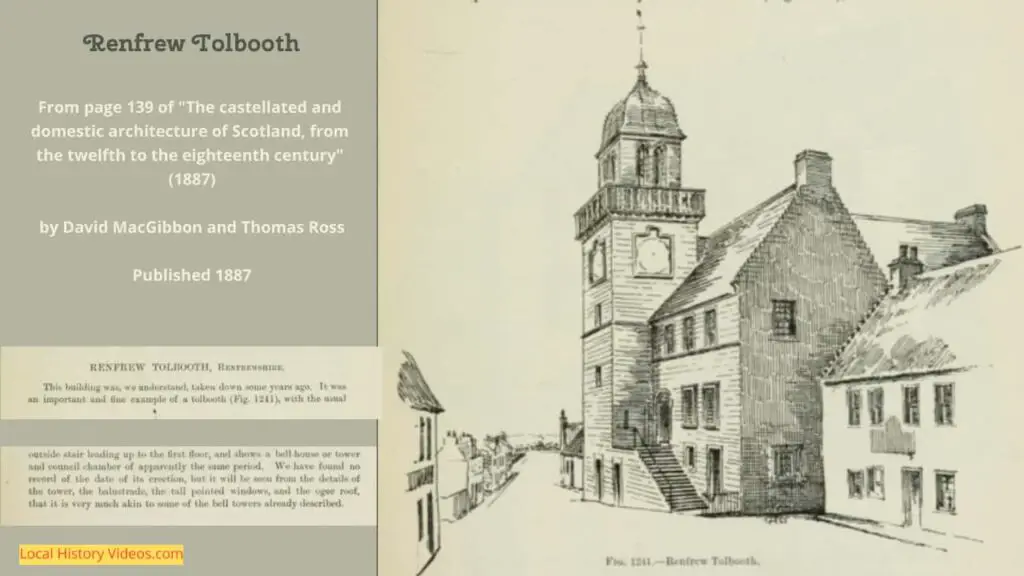
Old Photographs of Renfrew
Enjoy a video showcase of old photographs of this historic town.
Old Photographs Renfrew Renfrewshire Scotland: tourscotland (YouTube)
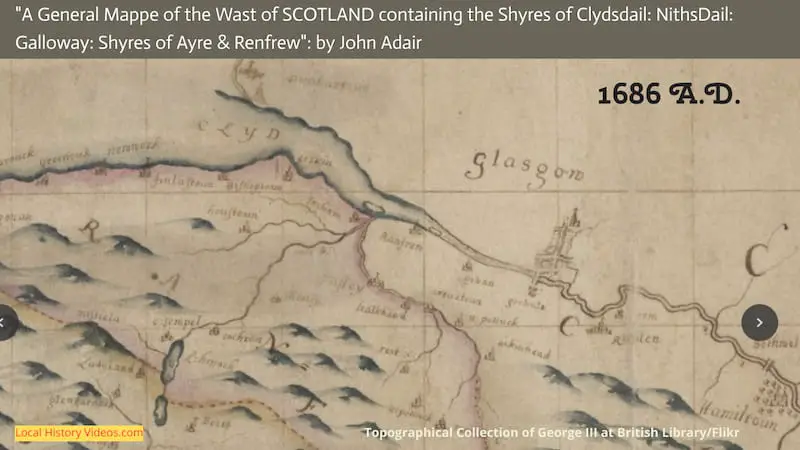
Brief History of Renfrew
Renfrew got its name from the ancient term rhyn frwd, meaning ‘point at the current’, referring to the point where the River Cart enters the River Clyde.
In the 12th Century, King David I gave Walter fitz Alan the hereditary appointment as High Steward of Scotland. The title came with the lands of Mearns, Strathgryfe, North Kyle, and Renfrew, making Renfrew’s first known documented reference.
Walter fitz Alan built the first Renfrew Castle, at a site now occupied by the Braehead shopping centre. Its aim was to both protect western Scotland from Norse invaders, and prevent Somerled, the Norse-Gaelic Lord of the Isles, expanding his territory.
King Malcolm IV, the grandson of King David I, demanded fealty, or formal acknowldgement of submission and loyalty, from Somerled. In response, Somerled and his warriors sailed to the mainland, where they were joined by other rebellious war leaders.
The two armies met for the Battle of Renfrew in 1164. King Malcolm IV’s army was victorious, and Somerled was killed.
In the 14th Century, King Robert III created a Royal Burgh, making Renfrew the only town in the area permitted to hold markets and fairs.
The Monmouth Rebellion, attempting to overthrow King James II, took place in 1685. Archibald Campbell, the 9th Earl of Argyll, took part. He was tracked down to Renfrew, where he was injured and captured, at a site marked by the Argyle Stones. After being taken to Edinburgh, the Earl was executed there.
By 1775, the ruinous Renfrew Castle had almost disappeared, though the surrounding ditch was still present.
In the 18th Century, a soap works was built in what is now Castlehill Gardens, using stone from the castle ruins.
On 13 March 1941, German World War II bombers dropped bombs and incendiary devices on St James Roman Catholic Church in Renfrew. Three Polish airmen in their twenties – Lance Corporal Pawel Radke, Aircraftman Antoni Ptaszkowski, and Aircraftman Zygmunt Sokolowski – died in their brave endevours to save the church from fire.
The heir to the British throne still holds the courtesy title Baron of Renfrew.
People of Renfrew
The list of notable people from Renfrew includes:
- Derek Mackay, Former SNP politician
- Lorne Crerar, Lawyer
- James McDonald, WW1 Flying Ace
- Alex Hunter, Footballer
- Bob Harley, Footballer
- Winifred Drinkwater, Aviator
- Jackie Husband, Footballer
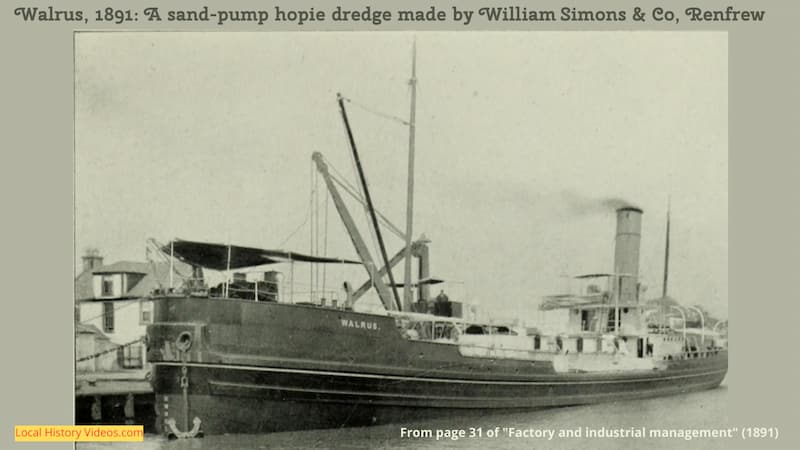
Renfrew Facebook Groups
Enjoy finding out more about the history of the town through the Facebook group OLD Renfrew – Know & love your town.
More about Scotland
- Old Images of Paisley, ScotlandEnjoy a glimpse of history through old images of Paisley, in Renfrewshire, Scotland.
- Old Images of Renfrew, ScotlandGlimpse history through old images of Renfrew, the county town in the west central lowlands of Renfrewshire, Scotland. Renfrew Tolbooth The original Renfrew Toolbooth was built in 1670. Repairs had to be carried out in 1688, at the expense of the Convention of Royal Burghs, as the building had fallen into ruinous decay. With an… Read more: Old Images of Renfrew, Scotland
- The Oldest Trees In The UKThe UK has a surprising number of very ancient yew and oak trees, some of which survive from the Bronze Age. We take a look at the most venerable trees that England, Scotland, Wales and Northern Ireland have to offer.

